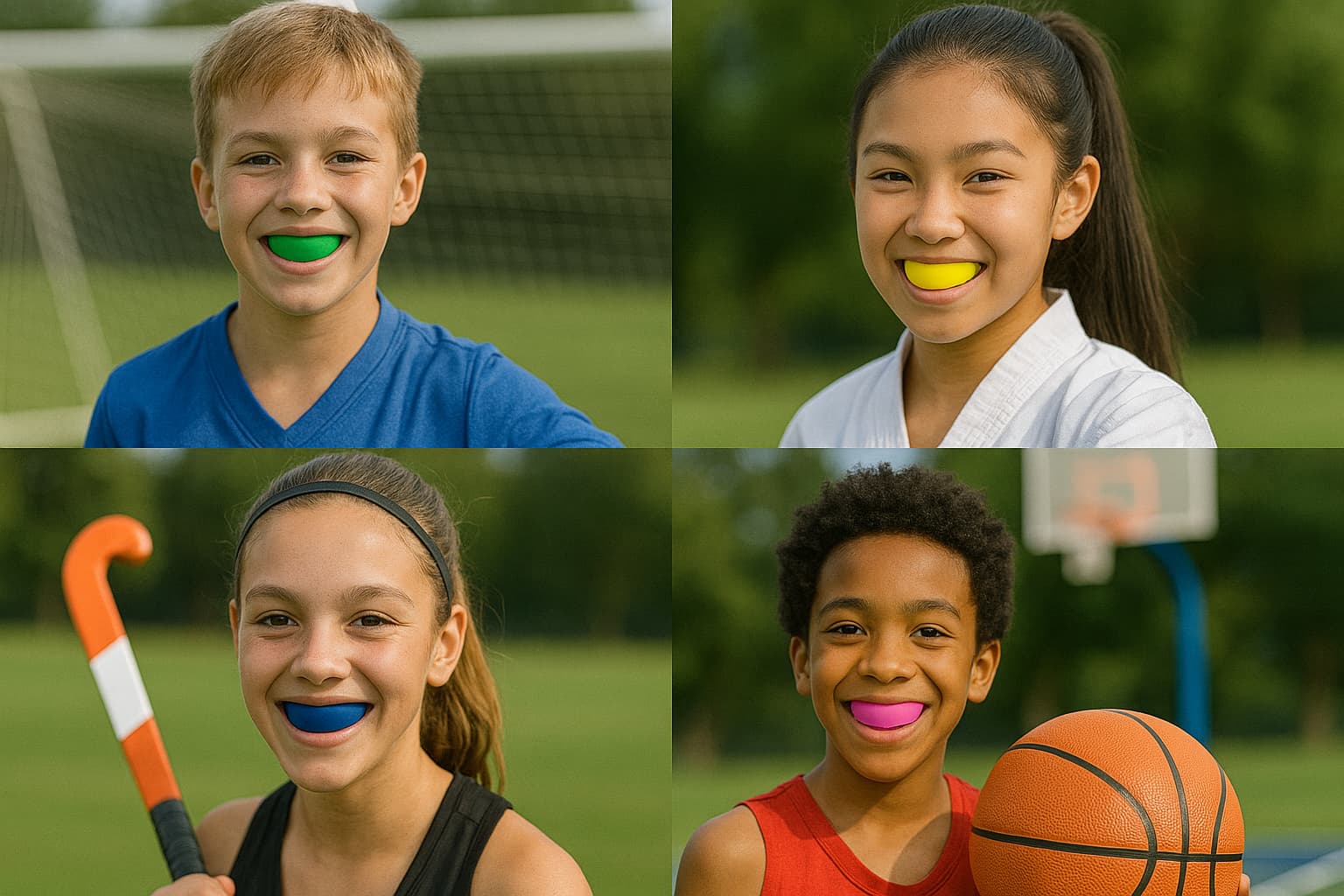Game On: Keeping Your Child’s Smile Safe in Sport

At Orthosmile Orthodontics, we encourage kids to stay active.
Sport is fantastic for physical health, emotional wellbeing and building lifelong friendships. But if your child wears braces, their smile needs extra protection, especially during contact sports.
Braces don’t protect teeth. In fact, they increase the risk of injury if your child takes a knock to the face.
Here’s what every parent should know about keeping braces-safe smiles protected while playing sports…
Braces and Sport: What’s the Risk?
Orthodontic appliances are made of metal and wires. Thus, if your child falls, gets hit, or takes a ball to the face, the impact can cause:
- Cuts to the lips, cheeks or gums
- Broken brackets or bent wires
- Damage to the tooth root or nerve
- Setbacks in orthodontic treatment
Even minor accidents can cause major discomfort, especially when braces are involved.
That’s why wearing a mouthguard isn’t just a precaution; it’s essential.
Why a Mouthguard Matters
A well-fitted mouthguard acts as a cushion between the braces and soft tissues in the mouth. It helps protect not just the teeth, but also the gums, cheeks and jaw from serious harm.
For kids in braces, a mouthguard can:
- Prevent soft tissue injuries caused by metal brackets
- Protect against chipped or dislodged teeth
- Lower the risk of nerve or root damage
- Avoid delays in orthodontic progress caused by trauma
How to Get Your Child to Wear a Mouthguard Consistently
Even the best mouthguard won’t help if it’s left in the sports bag.
Here are a few tips to build the habit:
- Keep the mouthguard in a clean, ventilated case with their sports gear
- Have a spare on hand in case one is lost or broken
- Let your child choose the colour or customise it with their name
- Encourage coaches to make mouthguards part of the kit check
Creating a consistent routine makes it more likely that your child will wear their mouthguard every time they need it.
What Happens if a Tooth Gets Hit?
A hit to the face can cause more than a chipped tooth. It can damage the inner pulp (nerve) of the tooth, cutting off blood flow and leading to discolouration, pain, or tooth death. This may require root canal treatment.
Teeth with braces are already under pressure from controlled movement, which makes them more vulnerable to trauma.
If your child injures a tooth, contact your dentist or orthodontist immediately, even if it seems minor.
What to Do After a Dental Injury
If your child does get hit in the mouth, fast action can prevent long-term damage.
Here’s what to do:
- Rinse their mouth with clean water
- Apply a cold pack to reduce swelling
- Check for loose brackets or teeth
- Save any broken pieces of the tooth or appliance
- Contact your orthodontist or dentist immediately
It’s always better to get an injury assessed quickly, even if it seems minor.
The Best Mouthguard for Braces
For children in active orthodontic treatment, a boil-and-bite mouthguard is often the most practical solution. These can be reshaped as teeth move, making them ideal for growing kids with changing smiles.
Important tips:
- Remould or replace the mouthguard regularly as teeth shift
- Bring the mouthguard to each orthodontic appointment so we can check the fit
- A poor-fitting mouthguard won’t offer proper protection and can even interfere with treatment.
Which Sports Have the Highest Risk?
Some sports come with a higher chance of mouth injuries.
We strongly recommend wearing a mouthguard for:
- Rugby and AFL
- Martial arts and boxing
- Hockey and lacrosse
But dental injuries can happen during casual activities too, such as playground games, scooter rides, or backyard footy. Encourage your child to wear their mouthguard during any high-energy play.
Braces Don’t Mean Sitting on the Bench
Many kids continue to play at elite levels while wearing braces. With the right protection, orthodontic treatment doesn’t have to interrupt the sports they love.
A properly fitted mouthguard ensures your child can stay active without risking damage to their teeth or orthodontic appliances.
Keep Protecting Their Smile After Treatment
Once braces come off, the teeth are still stabilising. An injury at this stage can shift them out of position, undoing months or years of progress.
We recommend a custom-made mouthguard from your dentist after orthodontic treatment finishes. It provides the highest level of protection and helps maintain that beautifully aligned smile.
Braces-Friendly Sport Checklist: Mini Summary
Before the next game, check:
- Is the mouthguard clean and in good condition?
- Does it still fit properly with the current position of the braces?
- Has your child practiced putting it in and taking it out safely?
- Do you have a backup if it gets lost?
- Are coaches and teammates reinforcing the importance of mouthguards?
Need Help Choosing a Mouthguard?
Protecting your child’s smile is a team effort, and we’re here to support you every step of the way. If you’re unsure which type of mouthguard is best for your child, or if you need guidance after a dental injury or a knock to the mouth, our experienced team is ready to help.
We can talk you through the different options available and advise you on what will offer the best protection during orthodontic treatment.
If your child already has a mouthguard, we’re happy to check the fit at their next visit and recommend any adjustments that might be needed to keep it secure and comfortable.
And if an injury has occurred, we can help you respond quickly and coordinate with your dentist if any further care is required.
Visit orthosmile.com.au to book an appointment or call us on 0402 506 602.
Let’s keep your child’s smile safe, strong and ready for every game, on and off the field.
